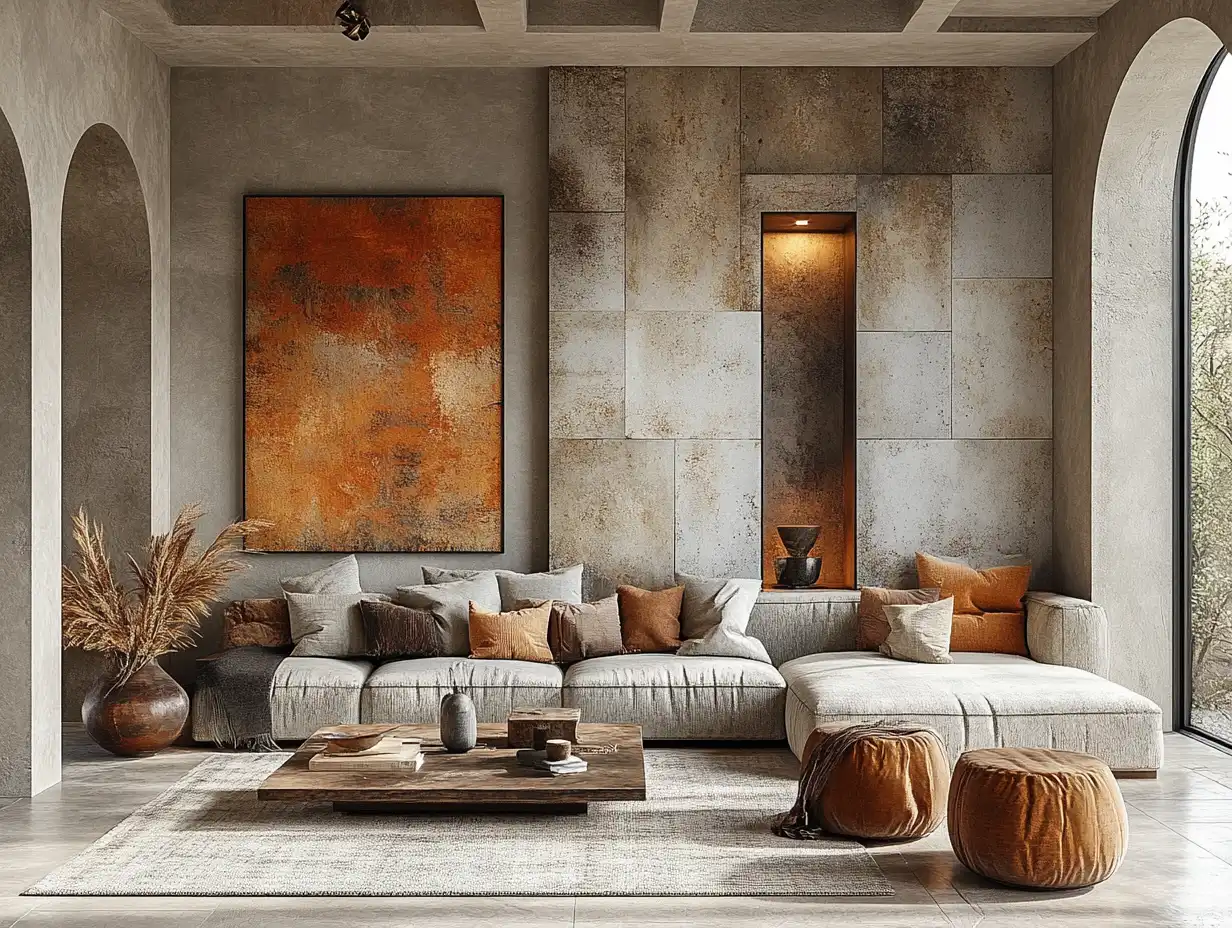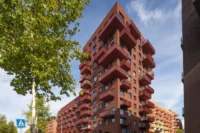Imagine walking into a space that perfectly reflects your personality and style, all thanks to cutting-edge technology. With the rise of GPT-4O, the world of interior design is on the brink of a transformation. This advanced AI can analyze your preferences and create stunning designs tailored just for you, making the design process more accessible and efficient than ever.
I’m excited to explore how GPT-4O can revolutionize the way we approach interior design. From generating innovative layouts to suggesting color palettes that harmonize with your vision, this technology isn’t just a tool; it’s a creative partner. Join me as we dive into the potential of GPT-4O and discover how it could redefine our living spaces.

Overview of GPT-4o
GPT-4o marks a significant leap in AI technology, especially in interior design. Its unique capabilities transform how I approach designing spaces, making it more personalized and efficient.

Key Features and Capabilities
- Personalization: GPT-4o analyzes user data, such as client preferences and lifestyle needs, to generate tailored design suggestions. It evaluates styles, color schemes, and layouts that resonate with individual tastes.
- Design Assistance: GPT-4o assists in creating diverse design layouts quickly. It generates multiple concepts based on specific parameters, reducing the time spent on brainstorming ideas.
- Visual Compatibility: GPT-4o utilizes algorithms to suggest harmonious color palettes and furniture pairings. This feature ensures that all components of a design work together seamlessly.
- Data-Driven Insights: By processing an extensive database of design trends and preferences, GPT-4o provides insights that help inform design decisions. It identifies patterns and popular styles, enhancing the design’s relevance.
- Interactive Feedback: GPT-4o enables real-time interactions, allowing users to adjust designs instantly. I can modify parameters and receive immediate updates, fostering a collaborative design process.
Applications in Various Fields
- Residential Design: In homes, GPT-4o customizes spaces according to the occupants’ desires. It crafts personalized interiors that reflect the lifestyle and personality of residents.
- Commercial Spaces: GPT-4o helps businesses create inviting environments for customers. It analyzes market trends to ensure the design aligns with brand identity and enhances user experience.
- Hospitality Industry: In hotels and restaurants, GPT-4o designs captivating atmospheres that promote customer satisfaction. It factors in guest demographics to develop spaces that attract specific clientele.
- Event Planning: GPT-4o assists in designing temporary spaces for events, optimizing layouts for functionality and aesthetic appeal. It tailors environments to meet the themes and purpose of the occasion.
- Sustainable Design: By incorporating eco-friendly materials and practices, GPT-4o promotes sustainability in design. It suggests energy-efficient options and designs that minimize environmental impact.
Impact of GPT-4o on Interior Design
GPT-4O significantly transforms how interior design is approached, offering innovative tools that streamline processes and enhance creativity. With its advanced capabilities, this AI serves as a creative ally in redefining spaces.

Streamlining Design Processes
Streamlining design processes involves several key components.
- Rapid Concept Generation: GPT-4O generates numerous design concepts quickly, reducing the time spent on initial drafts.
- Automated Layout Configurations: Automated layout configurations save designers a considerable amount of effort, allowing them to focus on more complex tasks.
- Efficient Client Collaboration: Efficient client collaboration occurs through the interactive platform, where clients provide immediate feedback, leading to effective revisions.
- Data-Driven Recommendations: Data-driven recommendations tailor designs based on user preferences, simplifying decision-making in choosing styles and materials.
Enhancing Creativity and Innovation
Enhancing creativity and innovation presents new possibilities for interior design.
- Diverse Design Inspirations: GPT-4O taps into a vast database of design styles, inspiring unique and diverse interior concepts.
- Algorithm-Driven Color Palettes: Algorithm-driven color palettes ensure harmonious arrangements, fostering aesthetic appeal without manual calculations.
- Personalized Suggestions: Personalized suggestions reflect individual tastes, combining functionality with aesthetics in every design.
- Real-time Adaptations: Real-time adaptations allow for immediate iterations based on client feedback, keeping the design process dynamic and engaging.
With these transformative aspects, GPT-4O stands at the forefront of modern interior design, crafting personalized and innovative solutions for both residential and commercial spaces.
Personalized Design Solutions
GPT-4O excels at offering personalized design solutions, transforming how people interact with their spaces. The integration of advanced AI creates tailored environments that resonate with individual preferences and lifestyles.

Tailoring Spaces to Individual Needs
Tailoring spaces to individual needs hinges on understanding personal style, functionality, and comfort. GPT-4O analyzes user input—including preferences in color, style, and layout—to generate designs that reflect unique tastes. It suggests layouts that optimize space utilization, ensuring comfort and efficiency. Designers can leverage these suggestions to craft environments that enhance lifestyle and emotional wellbeing, creating homes tailored to each individual’s needs.
Utilizing Data for Better Outcomes
Utilizing data for better outcomes is at the core of GPT-4O’s functionality. The AI processes vast amounts of data from user interactions, trends, and design principles, enabling it to deliver relevant and effective design solutions. By identifying patterns and preferences, GPT-4O personalizes outcomes through algorithm-driven insights, ensuring choices are informed and intentional. This data-driven approach allows designers to access deeper insights, leading to designs that are not only aesthetically pleasing but also functionally superior.
Challenges and Considerations
The integration of GPT-4O into interior design presents various challenges and considerations that warrant careful attention.

Ethical Implications
Ethical implications arise with the use of AI in design. Data privacy concerns emerge as GPT-4O collects and analyzes user preferences. Ensuring user data remains secure and utilized responsibly is crucial. There’s also a risk of bias in AI-generated designs, potentially disadvantaging certain aesthetic preferences. To maintain fairness, I must ensure diverse data sets inform the AI, preventing overrepresentation of mainstream trends. Furthermore, intellectual property issues could arise when the AI generates designs that mimic existing works. Clear guidelines for originality and ownership must be established to protect designers and users alike.
Balancing Technology and Human Touch
Balancing technology and the human touch is essential in the design process. While GPT-4O enhances efficiency, the emotional connection between designers and clients remains vital. I must focus on maintaining this relationship to ensure designs resonate on a personal level. Relying solely on AI may lead to sterile outcomes, lacking character and warmth. Incorporating human intuition and expertise allows for nuanced design solutions that AI cannot replicate. I should view GPT-4O not as a replacement but as a collaborative partner in the creative process, enhancing the synergy between technology and human creativity.
Future of Interior Design with GPT-4o
GPT-4o is set to revolutionize interior design, creating opportunities for innovative solutions and unique aesthetics. As this technology evolves, several emerging trends will redefine the landscape of design.

Emerging Trends
- Personalization at Scale: GPT-4o’s ability to analyze user preferences ensures tailored designs. It adapts layouts, materials, and colors to individual tastes, fostering environments that reflect personal identities.
- Sustainable Design Practices: The integration of eco-friendly solutions is increasing. GPT-4o recommends materials and designs that minimize environmental impact, supporting sustainability in both residential and commercial spaces.
- Virtual and Augmented Reality: Combining GPT-4o with AR and VR technologies enhances visualization. Clients can experience designs in 3D before implementation, making informed decisions through immersive previews.
- Data-Driven Insights: Continuous learning from user interactions allows GPT-4o to refine suggestions over time. This dynamic adaptability leads to increasingly accurate design recommendations based on emerging trends and preferences.
- Automation of Repetitive Tasks: GPT-4o streamlines design processes by automating layout configurations and material selections. Designers can focus on creative, high-value aspects while the AI manages logistical details.
The Role of Designers in a Tech-Driven World
- Creative Collaboration: Designers act as creative partners with GPT-4o. They utilize its capabilities to enhance their vision while maintaining their unique artistic touch, ensuring designs remain human-centered.
- Emotional Intelligence: Designers leverage their understanding of emotions and aesthetics to communicate effectively with clients. This human element is essential to create designs that resonate on a deeper level.
- Ethical Oversight: Designers play a crucial role in overseeing AI-generated outputs. They maintain ethical standards and ensure original creativity, fostering a balance between technology and artistic integrity.
- Client Education: Educating clients on how to interact with GPT-4o becomes critical. Designers guide clients in utilizing AI features, maximizing the benefits while retaining personal input in the design process.
- Adapting to Change: Staying agile in a tech-driven environment is vital. Designers must embrace new tools and methodologies, continually evolving their skills to harness the full potential of GPT-4o in their projects.
Conclusion
Embracing GPT-4O in interior design opens up a world of possibilities. I see it as a powerful ally that can enhance creativity and streamline processes while keeping the human touch intact. As we navigate this exciting landscape it’s crucial to prioritize ethical considerations and maintain a balance between technology and personal connection.
The future looks bright with GPT-4O leading the charge toward more personalized and innovative design solutions. I’m thrilled to witness how this technology will reshape our spaces and redefine the role of designers. By leveraging AI’s strengths while nurturing our creative instincts we can create environments that truly resonate with our individual lifestyles and values.
- AI decor trends
- AI furniture arrangement
- AI home decor solutions
- AI in interior design
- AI-powered interior design
- future of home design
- GPT-4o for home decoration
- GPT-4o interior design
- intelligent design algorithms
- interior design automation
- interior design technology
- smart home design software
- virtual design assistant
















Leave a comment